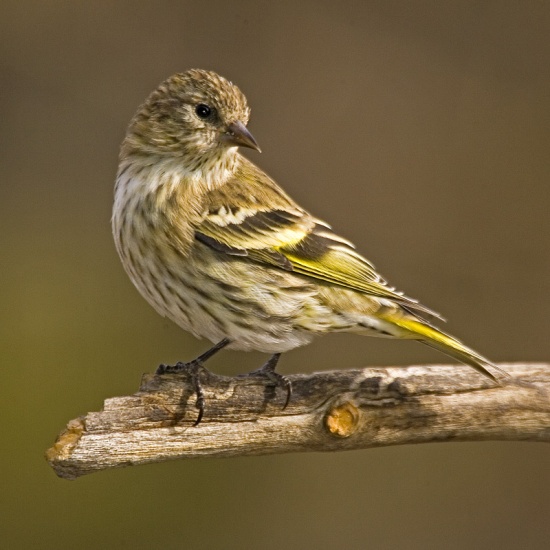| Line 14: | Line 14: | ||
==Distribution== | ==Distribution== | ||
[[Canada]], [[Alaska]] and northern parts of the [[United States]], occasionally travelling much further south in cold winters. They have been observed in Texas during the 2008-2009 winter. | [[Canada]], [[Alaska]] and northern parts of the [[United States]], occasionally travelling much further south in cold winters. They have been observed in Texas during the 2008-2009 winter. | ||
| − | ==Taxonomy== | + | ==Taxonomy== |
| − | |||
==Habitat== | ==Habitat== | ||
Coniferous and deciduous forests, woodlands, parks, shade trees near human habitation, alder thickets, and brushy pastures. | Coniferous and deciduous forests, woodlands, parks, shade trees near human habitation, alder thickets, and brushy pastures. | ||
Revision as of 14:20, 21 June 2009
| This article is incomplete. This article is missing one or more sections. You can help the BirdForum Opus by expanding it. |
- Carduelis pinus
Identification
- Small - 5 ins (12.5 cms)
- Short, forked tail
- Long, pointed wings
- Long, slender bill
- Brown body with heavy streaking
- Yellow wing and tail patches
Male
Bright yellow wingbars
Distribution
Canada, Alaska and northern parts of the United States, occasionally travelling much further south in cold winters. They have been observed in Texas during the 2008-2009 winter.
Taxonomy
Habitat
Coniferous and deciduous forests, woodlands, parks, shade trees near human habitation, alder thickets, and brushy pastures.
Behaviour
Diet
Includes seeds, plant parts and some insects.
Breeding
The female builds a large, shallow cup of twigs, grass, bark strips, rootlets, leaves, and lichen, lined with moss, plant down, hair, and feathers. 3 to 4 eggs are laid and incubated by the female for about 13 days. She is fed by the male. The young leave the nest after 13 to 17 days, and the parents continue to feed the young for about three more weeks.




